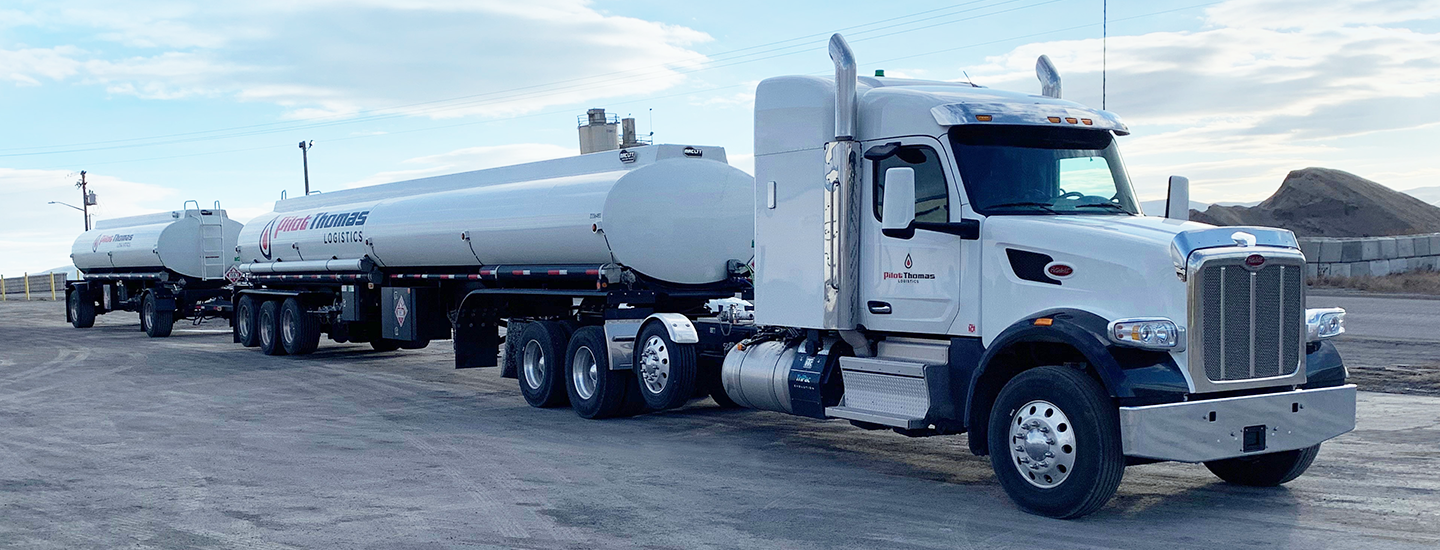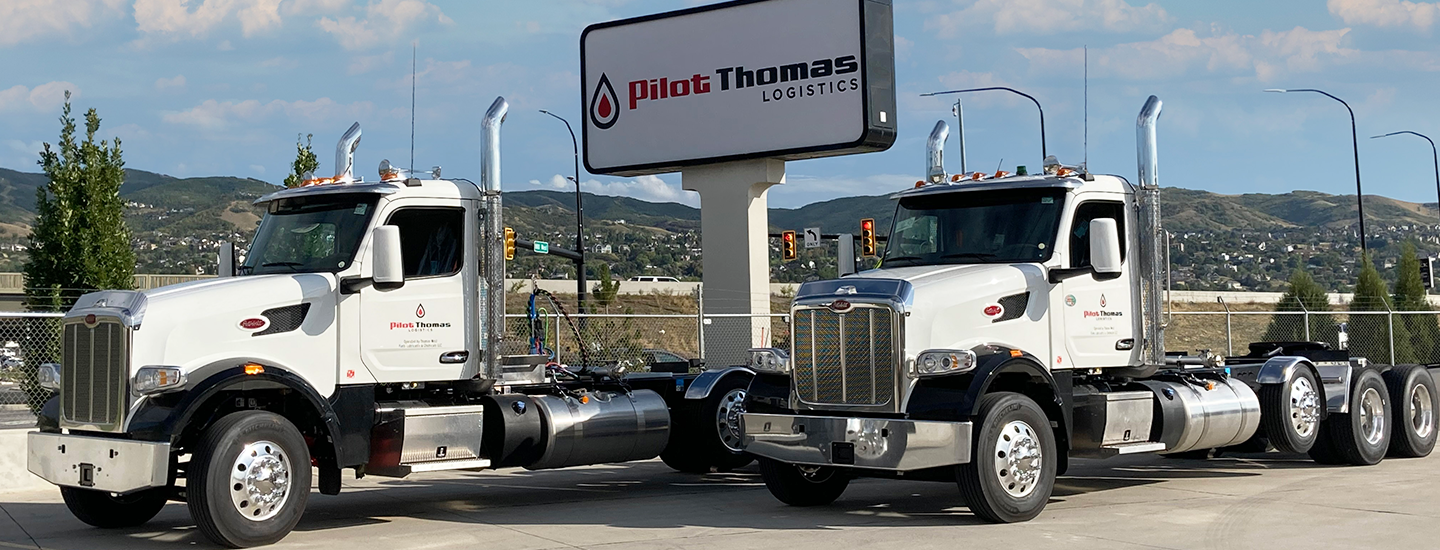Pilot Thomas Logistics Solves Right-Sizing Dilemma with PacLease
April 21, 2022

“We are problem solvers. We are solutions providers.”
Those two simple sentences – called out on the Pilot Thomas Logistics website -- make up the fabric of what the company is all about.
“We can’t do the unique things we do without a network of good suppliers,” stressed Doug Hyer, who serves as operations director for Pilot Thomas Logistics. “PacLease is a significant part of what we do, and they help us greatly with our transportation challenges.”
What Pilot Thomas does is about as diverse as it gets. Since its beginning in 1936, the company has grown to become the largest fuel and lubricant supplier in the United States. The company works on land and sea. On land, it delivers fuel and lubricants to primarily commercial accounts, plus it has its own fleet of mobile lube trucks to provide on-site service to mining and construction customers. At sea, the company owns its own barges that refuel ships and other commercial watercraft.
“It’s a big operation with a lot of moving parts,” said Hyer. “We have Class 7 and 8 trucks running now that are configured for specific jobs, and we’re continuing to add. They’re dispersed at multiple locations located across 18 states.”
The company navigated the once-in-a-lifetime transition challenges that have arisen from the COVID-19 pandemic. According to Hyer, the oil and gas industry often experiences cyclical times. “But nothing could have prepared us for the crash that came with the pandemic,” he said. “Everything shut down, cars and equipment weren’t running, and customer demands temporarily changed dramatically.”
The company’s ongoing journey towards efficiency, coupled with the pandemics help, jump started fleet adjustments. The company started its move from truck ownership to full-service leasing with PacLease in mid-2020 to “right-size” its fleet, and utilize maintenance from PacLease to keep costs under control.
“We were at several hundred trucks pre-pandemic,” Hyer said. “To shrink our fleet, we sold off surplus trucks and PacLease took on other company-owned units through a lease-back program. That right-sized our own truck fleet, which will be replaced with PacLease units once they mileage out. To get us to the right equipment level, we leased PacLease units – mostly Peterbilt Model 567s and Kenworth Model T880s. We also leased a handful of Kenworth and Peterbilt medium-duty trucks for our propane business in Idaho, Utah, Nevada and Texas.”
Those moves helped Pilot Thomas Logistics weather the storm and position itself for future growth. That growth came quickly enough as the economy went from dead to rejuvenated.
Hyer said the company now has additional new PacLease trucks on order to handle the growth it’s now seeing. Those trucks will also help support the company’s new on-site fueling business for commercial truck fleets. “We’re seeing regional fleets now contracting with us to re-fuel their trucks at night, so drivers have one less thing to worry about in the morning, or at night. With the driver shortage becoming very real, anything fleets can do to make their drivers more productive, and happier, the better. We’re using Peterbilt 567s with primarily 4,500-gallon tank wagons for this part of our business.”
According to Hyer, working with PacLease was predicated on the leasing company’s ability to custom spec the trucks. “They’re the leasing company that’s able to do that,” he said. “In several states, Nevada for example, we haul 129,000 pounds – the legal limit. We always look to provide drivers with industry-leading equipment that maximizes the amount of fuel or other products we can haul so building a truck our drivers are proud to operate -- that also accommodates those loads -- is vital to our success. And, we also contract with some gold mines in Nevada – we have Kenworth T880s and some Peterbilt 567s with double side-dumps that haul gold ore from the mine to a gold processing facility 90 miles away. We know spec’ing very well and what we need, but it’s great to have another set of eyes on our trucks. PacLease has been great about getting Kenworth and Peterbilt engineers together with us to help us build trucks that are better than what they replaced.”
For the heaviest payloads, the tractors are powered by 15-liter Cummins 500 hp engines with 1850 lb.-ft. of torque, and driven through Eaton UltraShift 18-speed automated transmissions. In 80,000 pound states, trucks are typically spec’d with 450 hp engines. Some trucks are run in slip-seat operations – clocking as many as 25,000 miles per month, while others put on around 10,000 miles each month.
While custom spec’d trucks keep payloads maxed out, PacLease’s maintenance program ensures uptime is maximized as well.
“PacLease matches well with our terminal locations, which is great when it comes to maintenance. They notify us when a PM is due and they either come out to our own location or in some cases, we bring the trucks to their location,” said Hyer. “They know these trucks inside and out and have parts readily available. During the pandemic, we’ve seen parts shortages – DEF sensors for example – but PacLease has been able to come through not only for our leased trucks, but also for our owned vehicles.”

For Hyer, the benefits of a full-service lease go far beyond running new, well-maintained vehicles. “Drivers really like these trucks as much as we do,” he said. “In the past, we’ve run a lot of different brands – our drivers have seen an evolution. I actually received text messages from several drivers saying they really appreciated us spec’ing the new Peterbilt and Kenworth models. That was very gratifying to me. What’s more, we’ve had driver applicants come in, and when we asked how they heard about us, many have said, ‘I saw your trucks on the road and liked how they looked.’ I know the trucks are certainly helping with our driver recruiting and retention efforts.”
From a dollars and cents standpoint, Hyer reflected on the challenges of transforming the fleet. “It’s been a process and road that we’ve navigated, but our business is now healthy,” he said. “We were ahead of our competitors back in 2020. Moving forward, our business is about continually controlling costs and eliminating surprises. We now have accurate budget numbers and know what our cost-per-mile is. This allows us to manage our own numbers with confidence. That’s critical since we need accurate cost accounting when developing contracts with our customers.”
PacLease Trucks at a Glance:
Fuel Hauling Industrial and Marine; Lubricant trucks: Pilot Thomas runs several different configurations: Peterbilt 3-axle Model 579s pulling 9,500-gallon trailers; and 3 and 4-axle Peterbilt Model 567 straight trucks with 4,500-gallon double pumper tanks. For heavier weight scaling out at 129,000 GCW: Peterbilt Model 567 day cabs, along with Peterbilt 567s with 44-inch sleepers with 13,500-pound pusher axles.
Fuel Hauling C-Stores/gas stations: For gas station deliveries, Peterbilt’s Model 567 with 450 hp engines, driven through Eaton 10-speed automated transmissions are the truck of choice.
Side Dumps (for hauling gold ore): This application features Peterbilt Model 567 and Kenworth T880 4-axle day cabs. The trucks are powered by 500 hp engines, feature Eaton 18-speed UltraShift Plus transmissions, and utilize a PTO. They pull double side-dump trailers hauling 129,000 GCW.
